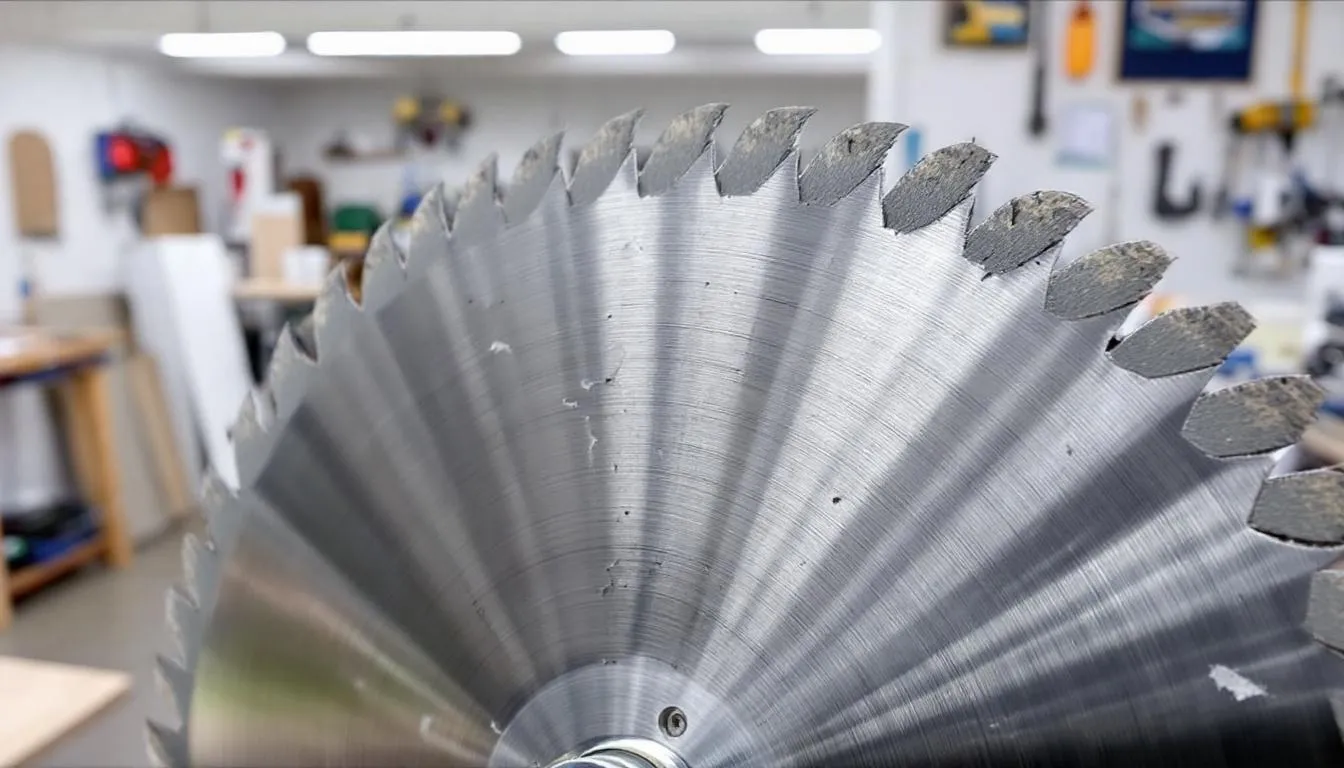Shop with the trade professionals!
Online sales for both trade & public.
Changing Your Circular Saw Blade Made Easy
Suppose you’re wondering how to change a blade on a circular saw. In that case, this guide will take you step-by-step through recognising when to replace the blade, gathering necessary tools, following safety precautions, and finally, changing the blade efficiently and safely.
Key Takeaways
-
Recognising when to replace your circular saw blade is essential for maintaining cutting efficiency and safety, with signs including dullness, damaged teeth, and uneven cuts.
-
Proper safety precautions are necessary when changing a circular saw blade, including disconnecting the power source, wearing protective gear, and ensuring the saw is powered off.
-
The blade replacement process involves systematic steps: safely removing the old blade, correctly installing a new blade, and considering the specific requirements for different types of saws.
Recognising When to Replace Your Circular Saw Blade

Recognising the right time to replace your circular saw blade ensures cutting efficiency and safety. Signs that your blade needs replacing include:
-
Dullness can lead to rough cuts and increased effort during use.
-
Cuts that are no longer smooth.
-
Damaged teeth, which can cause wobbly and uneven cuts, can complicate precision.
Deteriorating cut quality often results from a combination of dullness and damaged teeth. Signs like burning or smoking during cuts indicate excessive friction from a dull blade, requiring immediate replacement. A warped or bent blade can severely affect cut straightness, necessitating replacement upon detection.
Regular inspections help identify when a blade needs attention. Frequently checking for dull or damaged teeth ensures timely sharpening or replacement, improving efficiency and minimising saw motor wear. A well-maintained blade not only provides cleaner cuts but also extends the lifespan of your circular saw.
Essential Tools & Materials
Before changing your circular saw blade, gather all necessary tools and materials. This preparation streamlines the process and enhances safety. A blade wrench, often included with your saw, is designed specifically for loosening and tightening the arbour nut. A socket wrench might be needed for certain models with tightly secured arbour nuts.
For added safety, consider wearing work gloves while handling the blade. Work gloves protect against sharp blade edges, reducing the risk of hand injuries during replacement.
Having the tools and materials ready ensures a smooth and safe blade change. For visual learners, helpful videos on changing a circular saw blade and a YouTube video can be very helpful.
Safety Precautions Before Changing the Blade

Safety is paramount when working with power tools, including changing a circular saw blade. Safety goggles protect your eyes from flying debris during the blade change. Cut-resistant gloves reduce the risk of hand injuries when handling sharp blades.
Ensure the saw is completely powered off before starting the blade change. Unplug the saw or remove the battery for cordless models to prevent accidental activation. Following these safety measures minimises the risk of injury and ensures a smooth blade replacement.
Disconnecting the Power Source
To prevent accidental activation when changing the blade:
-
Disconnect the power source.
-
For corded saws, unplug the power cord.
-
For cordless models, remove the battery.
-
Always double-check that the power s

